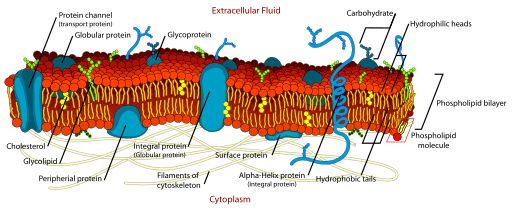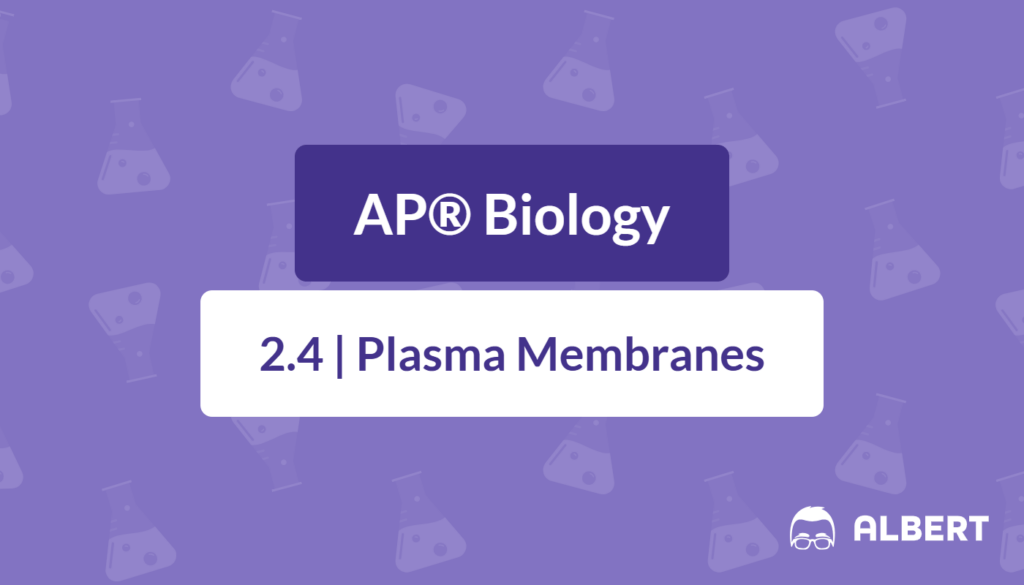What We Review
Introduction
The plasma membrane—often referred to as the cell membrane—is one of the most crucial components of any cell. For AP® Biology students, understanding its structure and function lays a solid foundation for topics ranging from cellular transport to cell signaling. In this post, we’ll explore how the plasma membrane is built and why it’s so important, following an outline designed to help you review and solidify these concepts. Let’s dive in.
What is the Plasma Membrane?
The plasma membrane (or cell membrane) is the thin, flexible boundary that encloses a cell. Unlike a rigid cell wall, the plasma membrane allows the cell to maintain a distinct internal environment while interacting and communicating with its surroundings. Whether you call it the cell membrane or the plasma membrane, this structure is essential in protecting the cell and helping it function efficiently.
Structure of the Plasma Membrane
A. Phospholipid Bilayer
- Phospholipid Structure: Each phospholipid molecule has a hydrophilic (water-loving) head and two hydrophobic (water-fearing) tails. This unique arrangement is crucial for creating a semi-permeable barrier around the cell.
- Orientation in the Membrane: Phospholipids naturally form a bilayer when in an aqueous environment. The hydrophilic heads face outward, interacting with water, while the hydrophobic tails group together inside, away from water.
B. Fluid Mosaic Model
- Overview: The fluid mosaic model describes how a variety of molecules—proteins, cholesterol, glycoproteins, and glycolipids—are embedded within the phospholipid bilayer.
- “Fluid” Aspect: The membrane is fluid because phospholipids and proteins can move laterally within the layer, enabling dynamic interactions and transport processes critical for cell function.
- Mosaic of Molecules: Proteins, cholesterol, and carbohydrates form a “mosaic.” Each has a specific role in transport, signaling, or structural support, contributing to the complexity and functionality of the plasma membrane.
Components of the Plasma Membrane

A. Phospholipids
- Role in Maintaining the Cell’s Internal Environment: Phospholipids create a barrier that selectively allows or restricts substances from entering or leaving the cell.
- Hydrophilic vs. Hydrophobic Properties: Their split personalities—heads that like water and tails that repel it—keep certain materials in and certain materials out.
B. Embedded Proteins
- Types of Proteins: Some proteins have hydrophilic regions exposed to the watery environments inside and outside the cell, while hydrophobic regions anchor them within the membrane’s core.
- Functions of Membrane Proteins
- Transport: Channels and carrier proteins help move molecules across the membrane.
- Signaling: Receptor proteins receive signals (e.g., hormones) from outside the cell and initiate responses.
- Structural Support: Anchor proteins maintain cell shape or stabilize ions and molecules.
- Enzymatic Activity: Some proteins facilitate chemical reactions at the membrane surface.
C. Other Components
- Cholesterol: This molecule helps regulate the fluidity of the membrane by preventing it from becoming too rigid or too permeable.
- Glycoproteins and Glycolipids: Carbohydrates attached to proteins (glycoproteins) or lipids (glycolipids) play key roles in cell recognition, communication, and signaling.
Functions of the Plasma Membrane
A. Selective Permeability
- Definition: The plasma membrane’s ability to control which substances can enter or exit the cell.
- Importance: This selectivity is vital for maintaining homeostasis—keeping internal conditions stable and suitable for life processes.
B. Communication and Signaling
- Receptors and Signals: Membrane proteins can bind to hormones or other signaling molecules, triggering a cascade of events inside the cell.
- Intercellular Connections: Membranes facilitate direct communication between cells, helping coordinate tissue and organ functions.
C. Interaction with the Environment
- Sensing Changes: The plasma membrane perceives changes in pH, temperature, or nutrient levels, allowing cells to respond appropriately.
- Exchange with Surroundings: Cells import nutrients for metabolism and export waste products to keep the internal environment balanced.
Summary and Key Takeaways
- The plasma membrane (or cell membrane) protects the cell and maintains homeostasis.
- Its core structure is the phospholipid bilayer, where hydrophilic heads face outwards and hydrophobic tails face inwards.
- The fluid mosaic model helps us understand the dynamic and diverse nature of membrane components.
- Proteins embedded in the membrane are vital for transport, signaling, and structural support.
- Cholesterol and carbohydrate-containing molecules like glycoproteins and glycolipids are key for membrane fluidity and cell recognition.
Practice Questions
- Describe the roles of phospholipids in maintaining the cell’s internal environment.
- Explain why the fluid mosaic model is described as both “fluid” and a “mosaic.”
- Identify two types of proteins found in the plasma membrane and state their functions.
- How does cholesterol help in regulating membrane fluidity?
- What is selective permeability, and why is it essential for cellular homeostasis?
Conclusion
Mastering the concept of the plasma membrane is a cornerstone of AP® Biology. From its phospholipid bilayer to the fluid mosaic model, each aspect of the membrane works in harmony to keep cells alive and functioning. By grasping these principles, you’ll be better prepared to tackle advanced topics in cell biology and beyond. Keep exploring, stay curious, and remember: the plasma membrane is just the beginning of the cell’s fascinating inner world!
Sharpen Your Skills for AP® Biology
Are you preparing for the AP® Biology test? We’ve got you covered! Try our review articles designed to help you confidently tackle real-world math problems. You’ll find everything you need to succeed, from quick tips to detailed strategies. Start exploring now!
Need help preparing for your AP® Biology exam?
Albert has hundreds of AP® Biology practice questions, free response, and full-length practice tests to try out.








